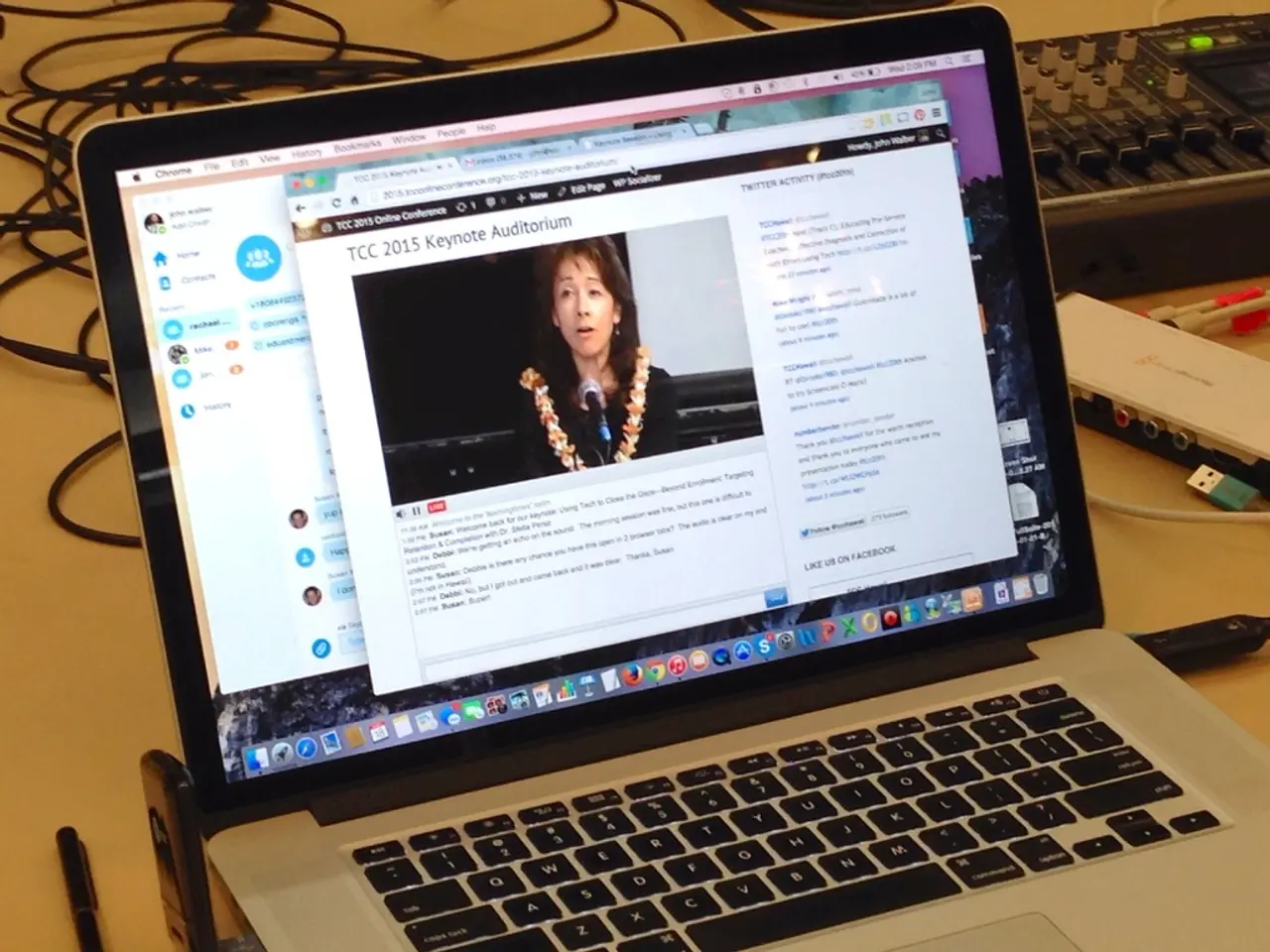Troubleshooting Your Tunes: Ditching DAW CPU Woes
Streamline Your DAW Efficiency: 9 Strategies for Improving Latency and CPU Utilization
Got your headphones blasting, ready to dive into another tune when suddenly, cracking and stuttering ruins the vibe. Sounds familiar? You've likely got a CPU problem.
Your computer's specs set the processing limits for your DAW, but you can still optimize its performance. Let's dig into some tips for a smoother music-making experience.
So strap in, and let's get to work! 🤘
To Newbie Producers 🧑💻
Wanna learn electronic music production the smart way? Check out our Free Masterclass on mastering the art without months of frustration. 👇
Contents Overview
- CPU, Latency and Buffer Size
- Latency
- CPU
- Buffer Size
- 5 Quick Tips to Optimize CPU Performance
- Finding the Right Buffer Size
- Tweaking Sample Rates
- Maximizing CPU Usage
- Closing Unneeded Apps
- Smart Rendering
- 5 Pro Tips for FL Studio CPU Optimization
- Driver and CPU Settings
- Closing Plugin Windows
- Smart Disable Plugins
- Avoiding Bridged Plugins
- Turning Off Keep on Disk
- 5 Tricks for Ableton Live CPU Savings
- Disabling Unused Inputs/Outputs
- Setting Spread to Zero
- Turning Off Warping
- Optimizing Audio Clips
- Using Return Tracks
- Wrap-Up
CPU, Latency & Buffer Size
As music producers, we're more artists than tech-nerds, but some geeky knowledge is necessary for perfection. Buffer sizes and sample rates may sound dull, but they're crucial for a seamless workflow.
Latency
Latency is the time data takes to move from Point A to Point B. In electronic terms, it's the delay between actions and responses, like a slow-loading website.
For instance, imagine voice recording with half-second delay—annoying, right?
To learn more about latency, watch this video: [Link to Latency Explainer]
CPU
CPU refers to the brain of your computer, processing your every input and software command.
Think of the CPU as the master conductor, coordinating your DAW's various tasks.
To simplify, a stronger CPU means better performance and less issues with your DAW. Other factors like RAM and disk storage size also matter, so we'll leave that for another day.
Buffer Size
Buffer size (or buffer length) determines the amount of time your PC has to process sound.
Short buffer size trims latency but strains the CPU. Conversely, increasing the buffer size lightens the load on the CPU, but introduces latency.
Buffer size and latency are inversely related—meaning less buffer size equals more latency, and vice versa. So decide whether you prioritize CPU load or latency.
Live performance demands low latency, while stability requires low CPU usage.
5 Speed Tips for Any DAW
Although there's intense debate about favorite DAWs, they share similar inner workings. This lets us apply many CPU-saving tips to most (if not all) DAWs.
Switching Buffer Sizes
Find the ideal buffer size by balancing latency and CPU load. Experiment until you find the "sweet spot." Latency depends on your work style; if you're all about jams, you'll need lower latency. I find 1024 samples an acceptable buffer size for my setup.
Tuning Sample Rates
The sample rate is audio's equivalent of frames per second in the video world. 44.1 kHz is the standard for digital music, so make that your setting.
Using Your CPU Efficiently
Computers are all about multitasking, so limit other apps and computer functions running while production to conserve your CPU.
Slap your computer in High-Performance Mode for Windows or deactivate sleep settings and power nap on macOS to maximize resources.
Closing Unwanted Apps
Closing unused apps and background processes relieves the CPU strain, allowing it to focus on your DAW.
For quick closures, use Task Manager/Activity Monitor to zero in on any lingering apps.
I go as far as restarting my computer before starting a project to eliminate background tasks. I'll even cripple my Wi-Fi for heightened focus!
Intelligent Rendering
Rendering clips to audio clears heavy plugins and lessens CPU load. Rendering has opened up a world of smooth workflow and quick project progress for me.
In FL Studio, render parts in the playlist by hitting CTRL+ALT+C.
Ableton Live users, right-click a track and "Freeze Track," then right-click again and "Flatten" to render to audio.
Save new versions of your project before rendering multiple sections.
In FL Studio, monitor CPU load by looking at the window's top. You can see which plugins are hogging resources by double-clicking on the window, displaying the Plugin Performance Monitor.
5 Tips for FL Studio CPU Optimization
Driver & CPU Settings
Optimize your FL Studio setup by selecting an ASIO device for input/output (unless you're on macOS).
Some audio settings to tweak are:
- Set priority to highest and disable safe overloads,
- Set resampling quality to 24-point sinc or lower,
- Adjust CPU settings (try activating triple buffer and mix in buffer switch for persistent CPU issues).
Closing Plugin Windows
Leaving plugin windows open consumes resources. Close them when you're not using them, and definitely don't go crazy having multiple pop-ups splayed across your screen.
To shutdown plugin windows swiftly, Ableton Live users can close multiple windows at once.
Smart Disable Plugins
Plugins drain CPU even when inactive. Enable "Smart Disable" to save CPU by automatically disabling idle plugins.
Avoiding Bridged Plugins
Bridged plugins happen on 64-bit systems when 32-bit plugins are used instead of 64-bit versions. Run the 64-bit versions for improved CPU efficiency.
Use the Plugin Manager (under Options > Manage Plugins) to determine which version of each plugin you're using.
Turning Off Keep on Disk
For projects with loads of audio samples, deactivating "Keep on Disk" in the Channel Sampler speeds up performance by allowing samples to be pre-loaded in memory before playback.
5 Ableton Live CPU-saving Tricks
Disabling Unused Inputs/Outputs
In Ableton Live, set your input and output configurations under Preferences > Audio, disabled any unneeded inputs/outputs.
Zeroing Spread
Ableton's Operator (and other plugins) utilize spread to create a second voice de-tuned from the first, needing twice the processing power. Setting Spread to 0 reduces CPU load.
Disabling Warping
With Simpler, deactivate warping. Adjust the complexity settings to avoid unnecessary strain on the CPU. You can also render audio once you've warped the sample.
Optimizing Audio Clips
For efficient processing, use RAM instead of HiQ, switch to RAM by double-clicking an audio clip and deactivating HiQ.
Utilizing Return Tracks
Place CPU-intensive plugins on return tracks, conserving resources. You'll also encourage a cohesive track due to consistent routing.
Need more tips on boosting workflow? Check out our 100 Ableton Tips!
Wrapping Up
Now armed with these tips and tricks, your computer's ready to give the performance it's capable of!
Regardless of the tips we shared, your computer and CPU still face limitations. That's why choosing the best laptop and audio interface is crucial.
Anything I missed? Drop me your thoughts below.
Enrichment Data
Here's a summary of the key tips for optimizing CPU performance within DAWs:
Overall
When troubleshooting and improving CPU performance in Digital Audio Workstations (DAWs), several techniques centering on both hardware and software settings can reduce audio glitches and smoothen real-time processing during virtual mixdowns:
Buffer Size & Latency Management
- Buffer Size Optimization:
- Reducing the buffer size decreases latency but increases CPU load, while a larger buffer size reduces CPU strain but introduces latency.
- For mixing, set buffer size higher (512+ samples) to ensure stable CPU performance and prevent stuttering.
- For recording, lower buffer size (64-128 samples) with the lowest possible latency to maintain the lowest viable stable latency.
- Buffer Size Sweet Spot:
- Find the CPU sweet spot for your system by experimenting with buffer sizes.
Power Management & CPU Optimization
- Selecting High-Performance Settings:
- On Windows systems, set the power plan to High Performance to prevent CPU throttling, enabling maximum CPU resources for real-time audio processing.
- Disabling CPU Throttling Features:
- To prevent CPU throttling speed reductions, disable features like Intel SpeedStep or AMD Cool’n’Quiet.
System & Software Settings
- Using Suitable Sample Rate & Bit Depth:
- Standard sample rates include 44.1 kHz and 48 kHz, and you're best-off using 16-bit as the bit depth for most DAW projects. Although higher sample rates demand more CPU resources, you should use them if professional fidelity is vital.
- Keeping Up-to-Date:
- Keep your audio interface drivers, DAW software, and operating system updated to guarantee stable performance.
- Optimizing DAW & Plugin Usage:
- Close unneeded background apps to squeeze out maximum CPU resources for your DAW. Bounce or freeze plug-ins to lighten the load of heavy tracks on your CPU.
Note: Always save new versions of your project before rendering to avoid losing work.
Other Hardware Considerations
- Adequate RAM & Fast Storage:
- While mainly CPU-related, sufficient RAM and fast storage help to reduce bottlenecks during audio streaming and plugin loading, indirectly enhancing CPU efficiency.
Breakdown
| Tip | Benefit | Notes ||-------------------------------------------|--------------------|--------------------------------------------------------------|| Set Higher Buffer Size during Mixing | Prevents Stuttering | Use 512+ samples when latency is less critical; ensure CPU is capable || Reduce Buffer Size during Recording | Minimizes Latency | Use 64-128 samples; lower latency necessary when working on tracks with live instruments || Select High-Performance Settings | Enables Maximum CPU Resources | Limit multitasking interruptions; helpful for professional audio production sessions || Disable CPU Throttling | Ensures Steady CPU Performance | Done via software settings or BIOS updates || Choose Appropriate Sample Rate/Bit Depth | Balances Quality & CPU Usage | Optimal for most DAW projects: 44.1 kHz/16-bit (24-bit for better quality & headroom) || Freeze or Bounce Tracks | Reduces Real-Time CPU Load | Streamline complicated projects with bouncing || Update Drivers & Software | Improves Stability | Keep your audio interface drivers, DAW software, and operating system current || Optimize DAW & Plugin Usage | Minimizes CPU Load | Limit other apps running in the background |
Now that you know the top tricks for optimizing DAW performance, tackle those troublesome CPU issues and embrace a smoother, stutter-free music studio. Good luck! 🤘🚀








